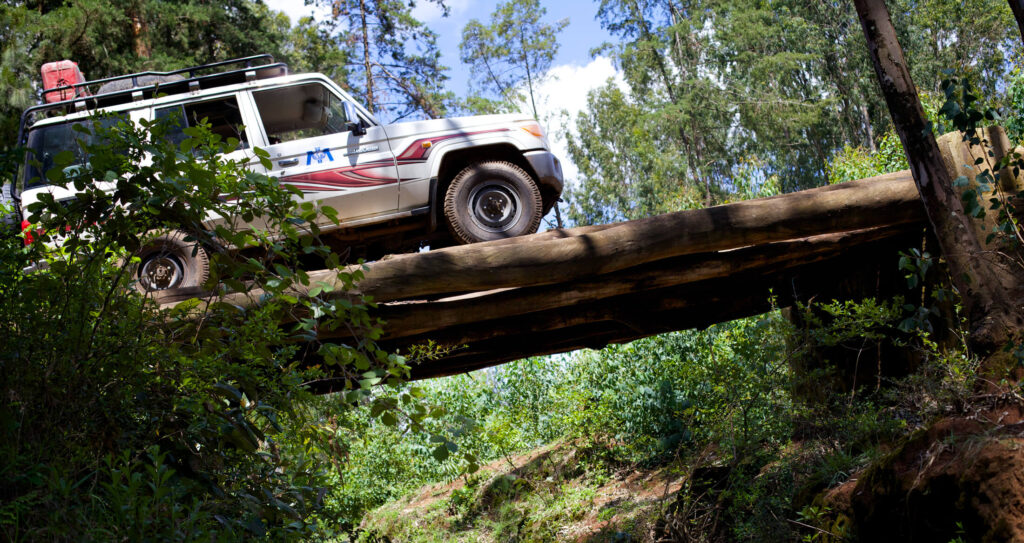When disaster strikes, International Medical Corps often relies on a roster of skilled volunteers to get on the ground quickly and help us to begin meeting the medical needs of those affected.
Our emergency roster has about 120 people who are skilled in a variety of areas and come to us from a variety of sources, says Sarah Scheel, Manager, HR Emergency Response.
Some volunteers come to us organically, she says. They are typically medical professionals who are retired or well established in their careers and are looking to do more. They may have gone on a mission trip or been involved in a smaller-scale humanitarian response, and they’re now looking for a larger organisation where they can make a difference.
“There are only a handful of organisations who do that in a volunteer environment—and we are one of them,” Sarah says.
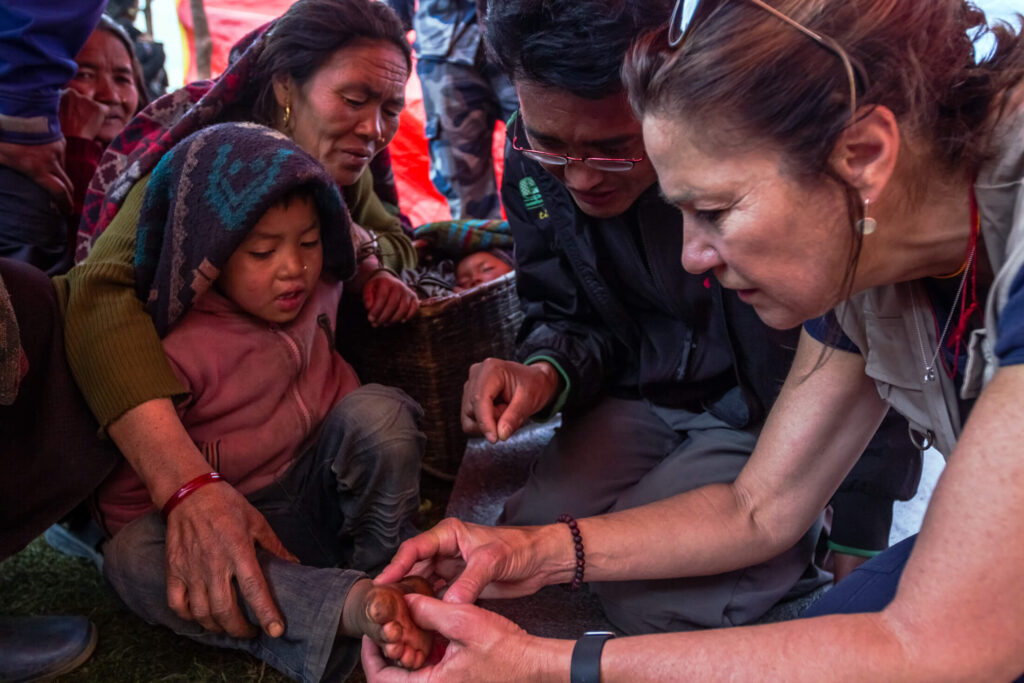
Many of our volunteers have been on our roster for years or even decades. “They’ve been around forever, they just keep showing up, and they’re super reliable,” she adds. “Our staff loves them, and we rely on them consistently from response to response.”
Other volunteers come to us through our connections with partners—such as the RN Response Network, which sent nurses who were the backbone of our recent responses to Hurricane Helene in North Carolina and the wildfires in Los Angeles, or the Harvard Humanitarian Initiative, which sent volunteers to our Ukraine mission to conduct training sessions for frontline workers on how to respond when the medical system is overwhelmed. These volunteers have been pre-identified as people who do well in the field, making vetting easier for our team.
How We Choose Volunteers
When someone applies as a volunteer with International Medical Corps, we start by reviewing their CV. Those who have the right qualifications for an emergency response have a screening call with Sarah, who assesses whether there are any potential issues.
“We occasionally get doctors who look really good on paper, but when you start talking to them, you realise they haven’t seen a patient in years and have just been doing research,” Sarah says. “We try to figure that out before we send them to the technical team to avoid sending people who probably aren’t going to be a good fit in the long run.”
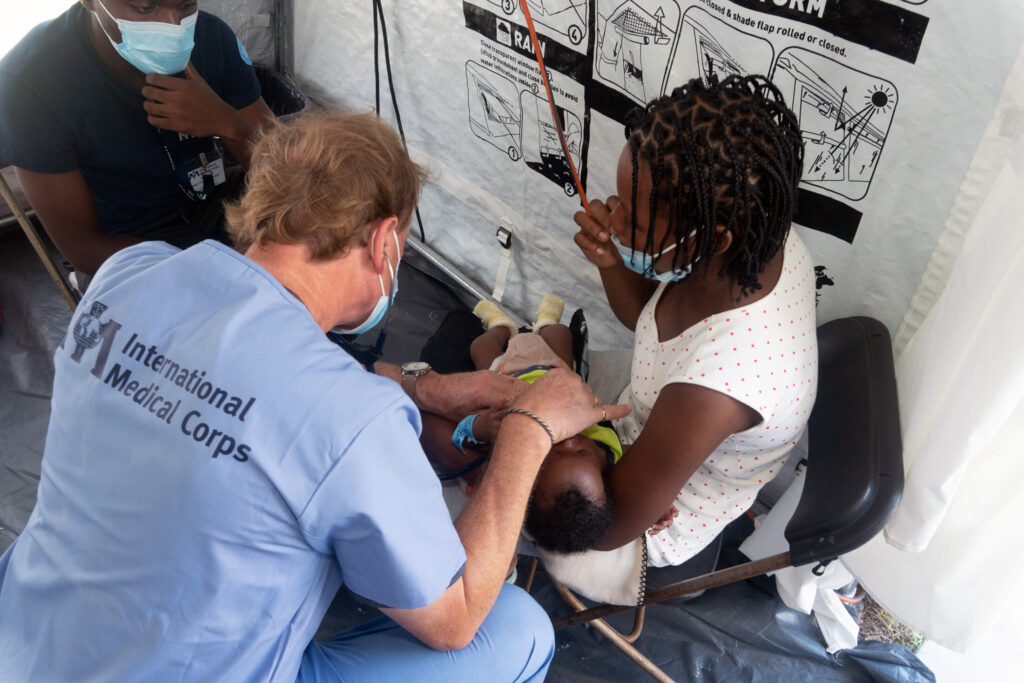
Prospective volunteers who pass the screening call are passed on to a member of the Emergency Response Unit (ERU) or one of our experienced volunteers, who have recently begun taking on a role as technical interviewers for potential roster members, to determine whether they’ll be trustworthy team players. The technical interviewer first takes a deep dive into the potential volunteer’s experience to see how their skills will translate to the field and then conducts a technical assessment to send back to Sarah.
Volunteers then go through a background check and provide medical clearance and proof of having received certain vaccines.
Once a volunteer joins our roster, they take training courses in humanitarian responses, International Medical Corps’ ethical standards, security and psychological first aid. They also receive field-specific training once they’ve deployed to an emergency. To increase efficiency, HR is working with the ERU to streamline some of the 12 to 14 hours of training that is required of volunteers, which will enable them to deploy to the field as quickly as possible after a disaster.
How We Deploy Our Volunteers
When we decide to deploy volunteers to a disaster area, the ERU determines the skills, languages and visas that will be needed for the response.
“It is a lot like taking different jigsaw puzzle pieces and figuring out how to make them into a cohesive picture,” Sarah says. “We have some tried-and-true folks who’ve been to the field a million times with us, and we try to include them with folks who are new, recognising the needs that the ERU has flagged to us and working with them to get the volunteers quickly into the field.”
During each of the recent responses in North Carolina and Los Angeles, International Medical Corps deployed about 50 volunteers, who spent as much as a month or more onsite. But not every volunteer on our roster will be a good fit for every response. Some volunteers may need to wait patiently before being deployed.
“For example, we had a cadre of skilled Kenyan nurses who had experience in the humanitarian field, but being from Kenya made it a bit complicated to deploy them to some responses, due to visa issues,” Sarah remembers. “But when we escalated our response in Gaza in 2023, they were the ones who could get into Egypt very quickly and could easily be given approval to cross the border into Gaza. So occasionally we have an opportunity to utilise people who are harder to move around.”
Meet Some of Our Volunteers
To celebrate our 40th anniversary, International Medical Corps has been featuring long-time volunteers—and some new ones—on our website. Here are their stories.
Dr. Michael Karch
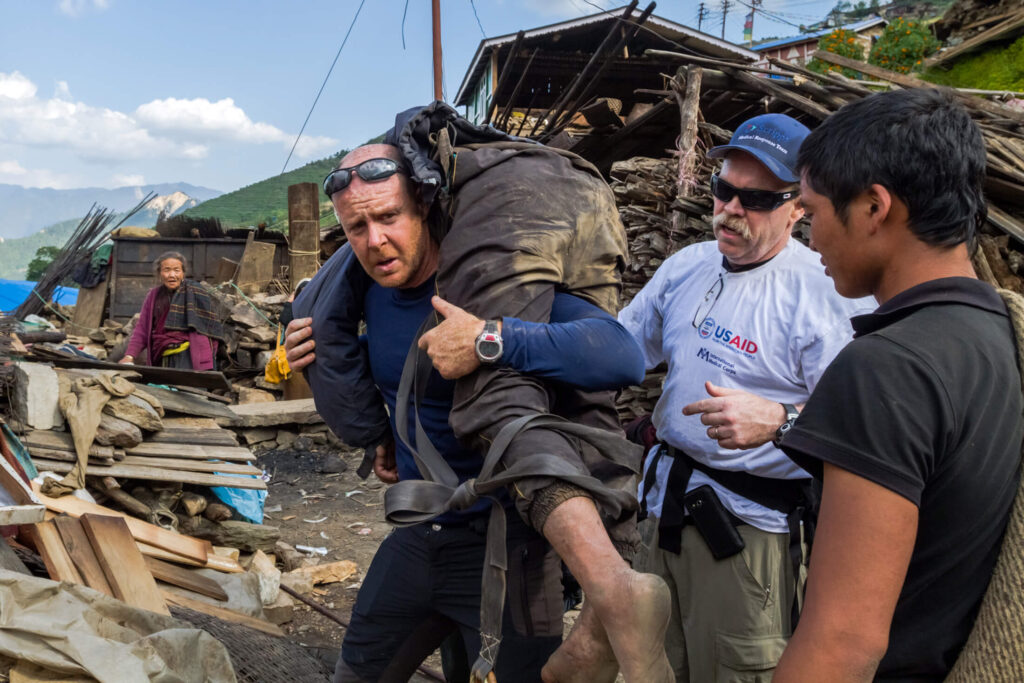
Before orthopaedic surgeon Dr. Michael Karch joined our volunteer roster a decade ago, he’d already had experience helping people in need of medical care during a disaster. As a resident doctor in Washington, DC, Dr. Karch packed up his medical supplies and took the last train to New York City to help set up the first mass-casualty centre at Ground Zero after the September 11, 2001, attack on the World Trade Center. When an 8.1-magnitude earthquake hit Nepal in April 2015, he immediately signed up with International Medical Corps and began traveling between remote Himalayan villages via helicopter—eventually rescuing an elderly man trapped beneath the rubble. Read more about Dr. Karch.
Dr. Chuck Wright
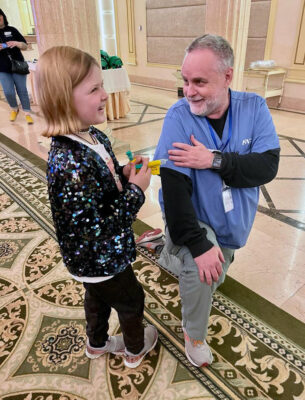
While stationed in Indonesia as the Regional Medical Officer at the US Embassy in Jakarta, Dr. Chuck Wright found himself responding to a natural disaster for the first time, helping survivors after a record-breaking tsunami struck in 2004. After retiring from a career with the US State Department—which also took him to Australia, Colombia, India, Kenya and Singapore—Dr. Wright began volunteering with International Medical Corps in 2018, responding to hurricanes in Florida and the Bahamas, providing COVID-19 vaccinations in Los Angeles and taking several trips to Ukraine to train first responders. Read more about Dr. Wright.
Dr. Michael Grady
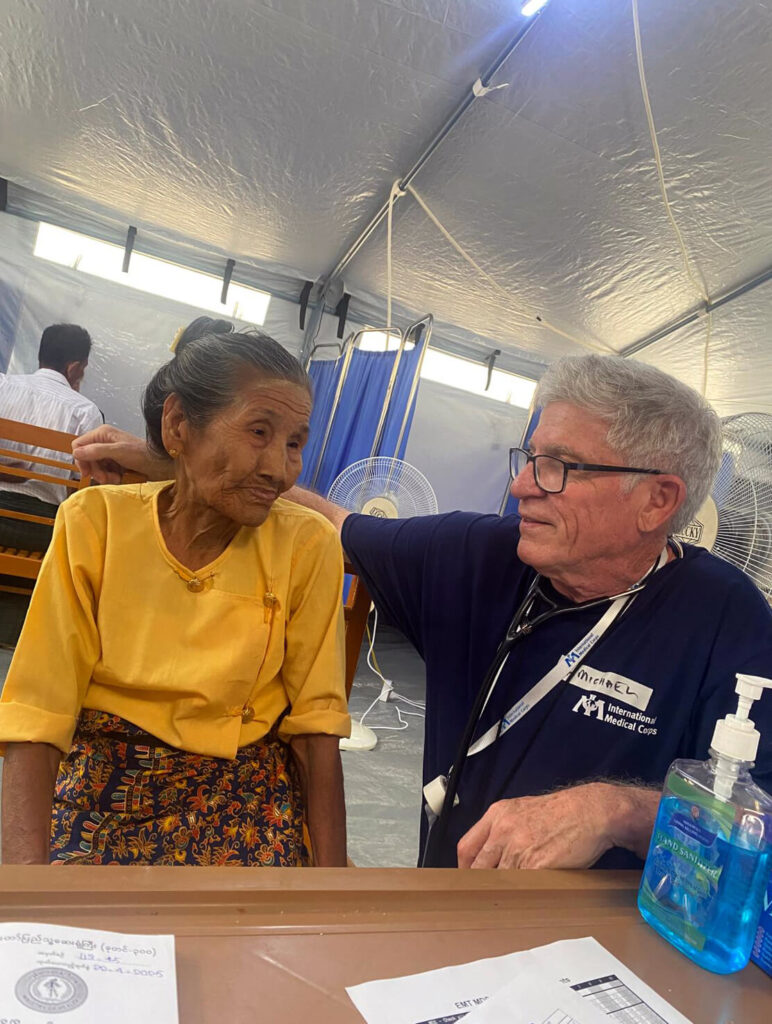
While still in high school, Dr. Michael Grady shadowed a local surgeon, learning about surgical anatomy and how to tie knots and manipulate surgical tools. After retiring from a career as an OB-GYN, Dr. Grady became involved with a nonprofit in Haiti, helping to run a remote clinic in the mountains, before volunteering with a West African organisation during the Ebola epidemic. When Russia invaded Ukraine in February 2022, Dr. Grady wanted to help—and a friend introduced him to International Medical Corps. He has deployed to Ukraine multiple times to provide comprehensive emergency- and trauma-care training to healthcare workers, deployed to our field hospital in Gaza for a month in 2024, and was involved in both our Hurricane Helene and LA wildfires responses. He’s currently in Myanmar helping to stand up our response there. Read more about Dr. Grady.
Michelle Frias
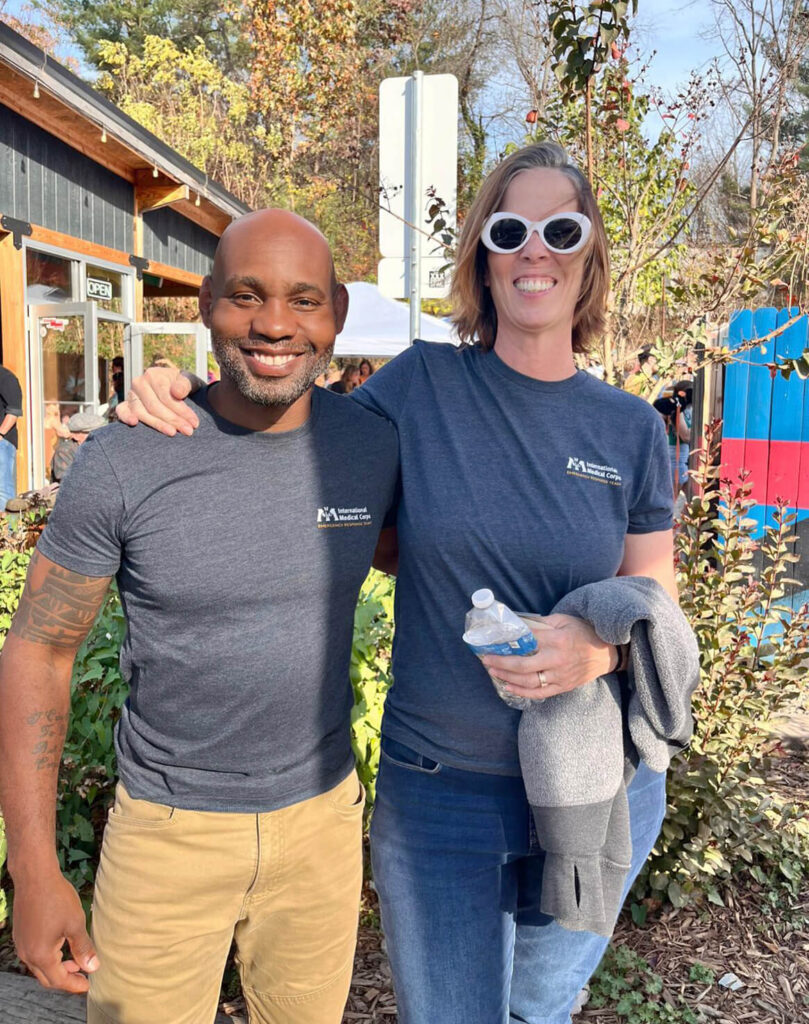
Social worker Michelle Frias deployed to North Carolina during our Hurricane Helene response in 2024. Not only was it Michelle’s first deployment with International Medical Corps, it was also the first time that our organisation had provided mental health care services during an emergency in the US. Michelle provided psychological first aid and linked people with needed services—including Steven, who needed a place for his dog, Clara, to stay while he went to work. Read more about Michelle Frias.
If you are interested in volunteering with International Medical Corps, please visit the volunteer page on our website to apply.
